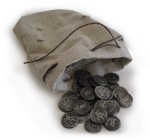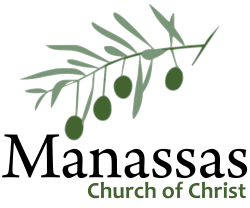 In Matthew 27.3-10, we are told that the money Judas hurled at the chief priest’s feet was used to purchase a field where strangers could be buried. Before its purchase the corpses of strangers, and those with no relative to provide burial, were cast into the ravine of Hinnom, the city sewer. The field, Hakeldama, has been recently excavated, and a curious tomb was found there. It was a tomb not unlike the garden tomb Jesus was laid in. It contained several sepulchral niches – as if it was the tomb of a family, and a well- off one. The central niche was plastered, and contained the shrouded male corpse of what was likely a priest. Archaeologists wondered why someone so important would be buried in Hakeldama. Usable DNA was recovered and tested. Then they had their answer. The male corpse so carefully and elegantly laid to rest was a sufferer of Hansen’s Disease. He was a leper.*
In Matthew 27.3-10, we are told that the money Judas hurled at the chief priest’s feet was used to purchase a field where strangers could be buried. Before its purchase the corpses of strangers, and those with no relative to provide burial, were cast into the ravine of Hinnom, the city sewer. The field, Hakeldama, has been recently excavated, and a curious tomb was found there. It was a tomb not unlike the garden tomb Jesus was laid in. It contained several sepulchral niches – as if it was the tomb of a family, and a well- off one. The central niche was plastered, and contained the shrouded male corpse of what was likely a priest. Archaeologists wondered why someone so important would be buried in Hakeldama. Usable DNA was recovered and tested. Then they had their answer. The male corpse so carefully and elegantly laid to rest was a sufferer of Hansen’s Disease. He was a leper.*
More laws are devoted to what is clean and unclean than to any other topic in the Torah. Those laws were supplemented with a complex web of rules by the rabbis. There were good reasons for all this. Although Hansen’s Disease is difficult to pass from person to person, the wider range of dermatological ailments were (and are) easily passed by touch. Cleanliness and isolation were the two best responses to communicable disease in the centuries before antibiotics. The better reason of course is that God commanded such cleanliness and isolation in His law. Obedience to God is always in our best interest, even if we are unable to perceive at the time why He has commanded this or that.
Jesus disregarded all those laws about not touching lepers or the unclean. He continued to touch them even though it is clear from scripture that he could heal from a distance, and did (Matthew 7.1-10). And He stretched out His hand and touched him, saying ‘I am willing; be cleansed.’ And immediately the leprosy left him (Luke 12.13; also Matthew 8.1-4, and Mark 1.40-45). Jesus touched lepers, bleeding women, prostitutes, and other unclean persons for three perfectly good reasons. First, anyone with the power over leprosy need not fear it. Second, He cared. Finally, God had empowered him to perform miracles, had given him a ministry of healing (Luke 4.18). In disregarding the Mosaic Law on this subject, He was being obedient to God.
Because of Jesus, no one, not even a leper must remain outside the camp.
A further, blessed irony of all this is that the only reason the leprous priest was able to be buried in a plastered tomb with his family at all is because the blood money paid for Jesus’ betrayal provided a burial plot. Otherwise his corpse would have been thrown into the ravine of Hinnom – gehenna – the word translated “hell” in the New Testament.
The stinking, flaming sewer in the ravine of Hinnom, just outside the city of Jerusalem, was the perfect metaphor for Hell. The death of Jesus provided a place where those rejected and alone could be buried with dignity, and escape the earthly gehenna. His death provides a way for us all to escape the eternal one. God never intended us to be there in the first place (Matthew 25.41, II Peter 3.9). He so wants us to be saved that He made blood-payment for us with the life of His Son (John 3:16). None of need be thrown into the ravine of Hinnom, nor buried outside the city in Hakeldama. We belong inside God’s city – alive, well, and inhabiting the place made ready for us (John 14.1-3).
*From The Serpent’s Promise, by Steve Jones, Little, Brown 2013 pp 275-276.




